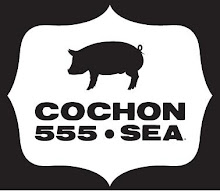
Shirley Corriher is the stuff of legends. Formally trained as a chemist, she takes that knowledge into the kitchen, and demystifies the science of cooking. Known as industry’s “food sleuth,” Shirley’s rich and illustrious career spans decades. And when it comes to science in the kitchen, the likes of Alton Brown and Harold McGee tap into Shirley’s wealth of knowledge.
Shirley makes frequent appearances on the Food Network with Alton Brown and is the author of a modern day classic, “Cookwise.” Her long-awaited book, “Bakewise” was released in October, 2008.
I have turned into a woman obsessed with ice cream, and when I had a questions dealing with the role of starch, all roads pointed to Shirley. Her easy going Southern hospitality is ever-so-charming, and the depth and breadth of her knowledge is astounding. I am a devoted fan and clearly under her spell.
SC: You wanted some starch information?
TS: Yes ma’am I do!
SC: Okay, the two main categories for starches are root starches and grain starches. The grain starches—this would include rice, wheat, and corn. You know…corn starch…all of these. The root starches are tapioca and arrow root are the ones we’re most familiar with. And now you’ve got potato starch which is neither fish nor fowl. It’s a tuber…and not a true starch.
Let me just go over some of the differences. The grain starches set very firmly like a coconut cream pie so that you can slice it perfectly, you know? They are crystal clear hot, but they’re cloudy when cold. You know a cherry pie made with corn starch will have that yucky, cloudy look to it? They’re clear hot, but yucky cloudy-colored cold. Another disadvantage of the grain starches, is that the freeze miserably. They form a network and what happens is…you have this network there and when you thaw it, it looks like an empty sponge with this big puddle of water around it. So they do NOT freeze well.
On the other hand, the root starches freeze and thaw beautifully. If you’re going to do something that needs to be frozen, you definitely want to use a root starch like tapioca—and now this is tapioca, not the pearls but the fine starch. The best place to get tapioca starch is at an Asian market because they’ll sell a whole bag for 79 cents, or so. Arrowroot will cost you $3 to $4 for a few tablespoons in the grocery store. So tapioca is the easiest root starch to use.
Now it is crystal clear hot or cold, so it’s beautiful. It swells and starts to thicken at a lower temperature than the grain starches. The grain starches don’t start to thicken until around 200, or 190 degrees F – up close to boiling point. But these root starches start to thicken around 160 degrees F. The disadvantage of the root starches is that they have a beautiful thick coating, but they don’t form something solid enough to cut just by itself, like flour or corn starch like in a coconut cream pie issue. You can cut it in a slice and unfortunately tapioca doesn’t set so thick that you can cut a slice of it.
What some commercial pie manufacturers do, they use mostly tapioca for that beautiful crystal clear effect so the fruit shows magnificiently and then they put a little bit of corn starch to make it set a little firmer, but not enough to mess up the color.
Potato starch is something all its own. It is much clearer than the grain starches hot or cold. It swells more than any other starch. I mean, it just gets HUGE! It’s granuals do (ssloooop!). It soaks in water like crazy! Pastry chefs love using a little bit of potato starch in a pound cake, because it swells like crazy and holds moisture, so it’s going to make the pound cake more moist. And you can do it with a pound cake because the structure is so tight—you know how tight-grained a pound cake is? So it doesn’t matter if the potato starch loosens that structure just a tiny bit. It won’t look real course or anything. It will still look like a pound cake. Luce Healy, a pastry chef in Denver, he wrote the “Art of a Cake” and in his pound cake, he substitutes 10% potato starch for part of the flour. In other words, he takes his weight of flour, calculates 10% and subtracts the flour and substitutes 10% potato starch. You get a moister pound cake.
Those are some of the basic things, but what specific questions do you have?
TS: Basically I’m working with several types of ice cream. And I’m curious to learn about the role of starch when it comes to ice cream. I’ve seen a variety of different methods used and I’ve done a little bit of trial and error, but now I’m stumped about the various starches and their properties.
SC: In making the custard for the ice cream?
TS: Correct.
SC: Some things I know about ice cream are vital to heat the milk to a certain temperature because you change the proteins in it, and you get a much smoother, creamier ice cream. I’ve got more about that in my book, “Cookwise” if you can lay your hands on that.
TS: I have a copy and I read that. That makes sense. Basically, I know Alice Medrich in her book, “Pure Desserts” she uses corn starch in some applications, and then I just recently met an ice cream maker who uses flour in her ice cream base. I thought that was odd, and that sparked a discussion with Alice about the different roles of starches. She was thinking that it might be interesting to use corn flour—as opposed to corn starch. But based on the discussion that we’ve had about the role of grains, I’m thinking that it probably wouldn’t work.
SC: I have a feeling that what might really be interesting is to use potato starch. You should use a little less. See potato starch thickens more for its weight than any other starch, so you would want to use less of it than corn starch. I don’t know whether tapioca starch…I just have no idea what would happen in using that in freezing. I would think that you would get a great texture with a tapioca starch in ice cream.
TS: And then it wouldn’t set up so hard, right?
SC: What are your thoughts on potato starch and how that holds on to moisture and then freezing it? Do you think that might make a granular texture out of that?
TS: I honestly don’t know. That’s something to think about…definitely.
SC: I would try tapioca. Go to an Asian market and get a sack of tapioca. The call it either tapioca flour or tapioca starch. And normally the difference between a flour and a starch is, the flour is the whole thing ground up like technically, potato flour is the whole potato. And the starch is just the starch with the protein and anything else removed. So many of these things, they’re mostly starch, so there’s not much difference between the flour and the starch.
TS: Thank you so much! That sets me on the right path. I really appreciate your help.
SC: I’d be very interested in hearing what all happens, and which one you think works best.
TS: Okay. I need to get in the kitchen and play mad scientist!I’m curious to learn more about your book that’s coming out this fall. Are you still slated to have that come out this fall?
SC: It’s in, and it nearly killed me! But it’s completely done. The editing, after the copy editor makes changes, you get one crack at it to change back what she’s got all wrong. And the pressure on that is just phenomenal.
TS: I’ve heard about that.
SC: Oh, shoot! It’s minute-to-minute. We have 80-100 pages and we go over them frantically and the next morning we call the editor and sometimes have a three hour conversation , giving her the things to change back because she knows all those marks. I thought I knew copy editing but boy, they had marks I never heard of! She enters it so the guy setting up the page gets it right. But anyhow, it was a wild, high-pressure experience!
TS: So tell me about the tail end of that process. From the time that you submit it and the time that they edit it and go over the revisions, what’s that timeline look like?
SC: It’s a couple of months, but you just go crazy. You get it back from the copy editor and a lot of her things are perfectly fine—the changes she makes. But some of the changes are not fine at all. She wanted to do pan sizes, writing out the word “by” as in, an “8 by 8” instead of an “8 x 8”, you know, the way you normally write a pan size? So I had to correct all those.
Sometimes it’s a little thing like I said, “Beat baking powder, flour and salt together vigorously.” And she changed it to “Stir.”
I said, “No, no, no! I don’t want you to stir it, I want you to beat the hell out of it!”You see, because sifting doesn’t really blend the baking powder evenly with the flour. And you get much better blending of the ingredients if you beat with a hand mixer or even with a fork, than by hand. Just beat well. That’s what I was trying to get across and I had written, “This beating is really important or you’ll have holes in your cake.” So anyhow…
TS: I’m excited to read it!
SC: It will be here soon.
TS: Will you be going on book tour?
SC: They don’t do book tours. Those days are gone forever. You go out and sell your book by teaching all around the country. So I definitely am teaching around the country. I’m going to Chicago and Long Island for Viking, I will eventually get to the West Coast, but I don’t have anything lined up at the moment. I’ve taught for Sur La Table.
TS: Interesting. I don’t know if you’ve talked with them recently but they’ve changed their format over the last couple years. They don’t host as many author visits anymore , and some of the authors have been really affected by that. They’ve scaled back quite a bit.
SC: Nick Malgeri has just done me a favor. He’s having me come up to New York for Baker’s Dozen. They give a copy of your book with the attendance and they always have about 80 people. I’m looking forward to that because I really enjoy speaking with bakers.
TS: When is your book released to the public?
SC: October 28th, 2008.
TS: Thanks Shirley, I’m looking forward to getting you out here and hopefully we can plug you into Vancouver and Portland as well.
SC: I’ve taught in Vancouver. There might be a few people who still remember me.
TS: Oh please….(deep sarcasim!)
SC: Thank you so much!
TS: Thanks Shirley. We’ll talk with you soon.




